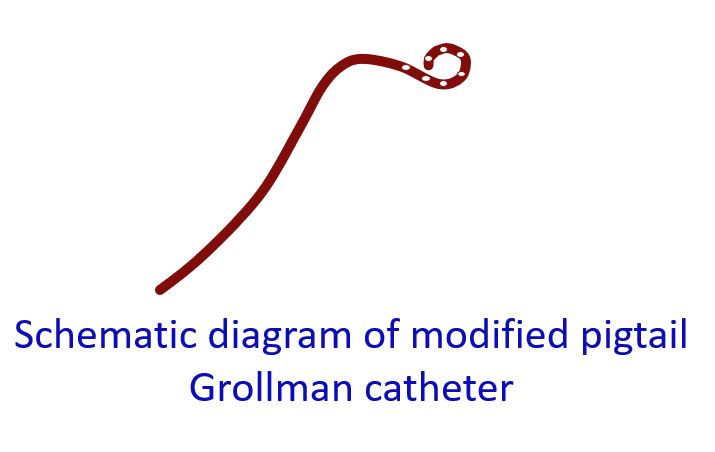Pulmonary angiography
Pulmonary angiography
Pulmonary angiography can be done by introducing a guidewire initially followed by a modified pigtail catheter like Grollman catheter, under fluoroscopic guidance.
Grollman catheter has a gentle rightward curve and an additional right angled leftward curve proximal to the side holes. The tip of the Grollman catheter has a pigtail shape.

Non-ionic contrast can be injected into the right and left pulmonary arteries to get corresponding angiograms. The guidewire and catheter are introduced through the femoral vein and directed to the pulmonary artery through the inferior vena cava, right atrium and right ventricle.
Earlier invasive pulmonary angiography was the gold standard for the diagnosis of pulmonary embolism. But due to the higher risk and lower resolution compared to computed tomographic pulmonary angiography, the current gold standard for diagnosis of pulmonary embolism is CT pulmonary angiogram.
Pulmonary angiography is still useful in the evaluation of complex congenital heart disease and prior to procedures like pulmonary angioplasty and pulmonary thromboendarterectomy for chronic thromboembolic pulmonary hypertension (CTEPH). It is also done to guide catheter directed thrombolysis for acute massive and submassive pulmonary embolism. Another reason is prior to coiling of pulmonary arteriovenous malformation or fistula.
Catheters other than Grollman catheter have also been used for pulmonary angiography. Hunter pulmonary catheter is another modified pigtail catheter for a brachiocephalic vein approach [1]. Others are Berman angiographic and reverse Berman angiographic catheters. Reverse Berman angiographic catheter can be used to provide proximal occlusion while injecting into a branch pulmonary artery. Both are balloon tipped catheters. In Berman angiographic catheter the side holes are proximal to the balloon while it is the other way round in reverse Berman angiographic.
Catheter manipulation in right ventricle can cause complete heart block in those with left bundle branch block and needs a temporary transvenous pacemaker support.
Reference
- Rosen G, Kowalik KJ, Ganguli S, Hunter DW. The Hunter pulmonary angiography catheter for a brachiocephalic vein approach. Cardiovasc Intervent Radiol. 2006 Nov-Dec;29(6):997-1002. doi: 10.1007/s00270-003-0093-y. PMID: 16779693.

